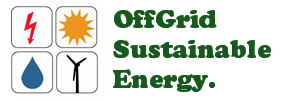
Understanding Crypto Trading Patterns: A Comprehensive Guide
In the world of cryptocurrency trading, recognizing and understanding Crypto Trading Patterns https://www.newsvoir.com/index.php?option=com_search&page=1972&keyword= can significantly influence your success. Patterns are essential tools that traders use to forecast future price movements based on historical data. By identifying these patterns, traders can make informed decisions whether to buy or sell. In this article, we will delve into the most common trading patterns in crypto, how they work, their significance, and tips for utilizing them effectively.
What Are Trading Patterns?
Trading patterns are formations created by the movement of price charts, reflecting the buying or selling pressure over a specific period. They are categorized primarily into two types: continuation patterns and reversal patterns. Continuation patterns suggest that the current trend will continue, while reversal patterns signal a change in the trend’s direction. Understanding these patterns can provide traders with insights into potential market behavior.
Common Crypto Trading Patterns
Several trading patterns recur frequently in cryptocurrency markets. Here are some of the most important patterns to be aware of:
1. Head and Shoulders
The head and shoulders pattern is one of the most reliable reversal patterns. It consists of three peaks: the first (left shoulder), the second (head), and the third (right shoulder). A head and shoulders top indicates a potential bearish reversal after an uptrend, while an inverse head and shoulders suggests a bullish reversal after a downtrend. Traders often place their sell orders below the neckline of the pattern, while buy orders are positioned above the neckline in the inverse version.
2. Double Tops and Bottoms
The double top pattern forms after an uptrend and indicates a bearish reversal. It consists of two peaks at roughly the same price level. Conversely, a double bottom forms after a downtrend and suggests a bullish reversal with two troughs at a similar level. Identifying these patterns early can help traders capitalize on the subsequent price movement.
3. Flags and Pennants
Flags and pennants are continuation patterns typically formed after a strong price movement. A flag looks like a small rectangle, while a pennant resembles a symmetrical triangle that follows an upward or downward movement. These patterns usually signal a brief consolidation period before the trend resumes. Traders often enter the market when the price breaks out of these formations in the direction of the prevailing trend.
4. Triangles
Triangle patterns can be ascending, descending, or symmetrical, depending on the trend’s trajectory. An ascending triangle is often considered bullish, suggesting that buyers are gaining strength, while a descending triangle can be bearish, indicating a decline in buying power. A symmetrical triangle indicates indecision in the market and can lead to significant price movements in either direction as the price breaks out.
Understanding Candlestick Patterns
Candlestick patterns are another critical aspect of analyzing trading charts. Each candlestick represents price movements over a specific timeframe, consisting of the open, close, high, and low prices. Recognizing the psychology behind these patterns can provide traders with valuable insights into market sentiment.
1. Doji
A doji occurs when the opening and closing prices are nearly the same, indicating indecision among traders. It can emerge in both bullish and bearish trends and often precedes a reversal, especially if it appears after a strong price movement.
2. Hammer and Hanging Man
The hammer pattern appears at the bottom of a downtrend, indicating a potential bullish reversal, while the hanging man occurs at the top of an uptrend, suggesting a bearish reversal. Both patterns are characterized by small bodies and long wicks, highlighting market rejection of higher or lower prices.
3. Engulfing Patterns
Engulfing patterns consist of two candles. A bullish engulfing pattern occurs when a smaller bearish candle is followed by a larger bullish candle, suggesting a potential reversal to the upside. Conversely, a bearish engulfing pattern indicates a possible downward reversal when a small bullish candle is followed by a larger bearish candle.
Importance of Volume in Trading Patterns
Volume is a critical component when analyzing trading patterns. High trading volume during pattern formation confirms the strength of the pattern, while low volume might indicate uncertainty. For instance, a breakout accompanied by significant volume is more reliable than one with weak volume. Traders should always consider volume in conjunction with patterns to validate their signals.
Tips for Trading with Patterns
Here are some practical tips for effectively utilizing trading patterns in your cryptocurrency trading strategy:
- Combine Patterns with Technical Indicators: Use technical indicators like Moving Averages, RSI, or MACD to complement pattern analysis and verify trading signals.
- Practice Risk Management: Always set stop-loss orders to minimize potential losses and protect your capital. Ensuring proper risk management is critical for long-term trading success.
- Stay Updated on Market News: External factors such as regulatory news, market sentiment, or technological developments can influence price movements. Stay informed to make better trading decisions.
- Backtest Your Strategies: Before applying trading patterns in real markets, consider backtesting your strategies to evaluate their effectiveness under various market conditions.
Conclusion
Understanding crypto trading patterns is essential for any trader seeking to navigate the volatile cryptocurrency markets effectively. By learning to recognize these patterns, incorporating them into your trading strategy, and combining them with sound risk management practices, you can enhance your decision-making process and increase your chances of success. As always, continuous learning and adaptation are key in the ever-evolving world of cryptocurrency trading.
